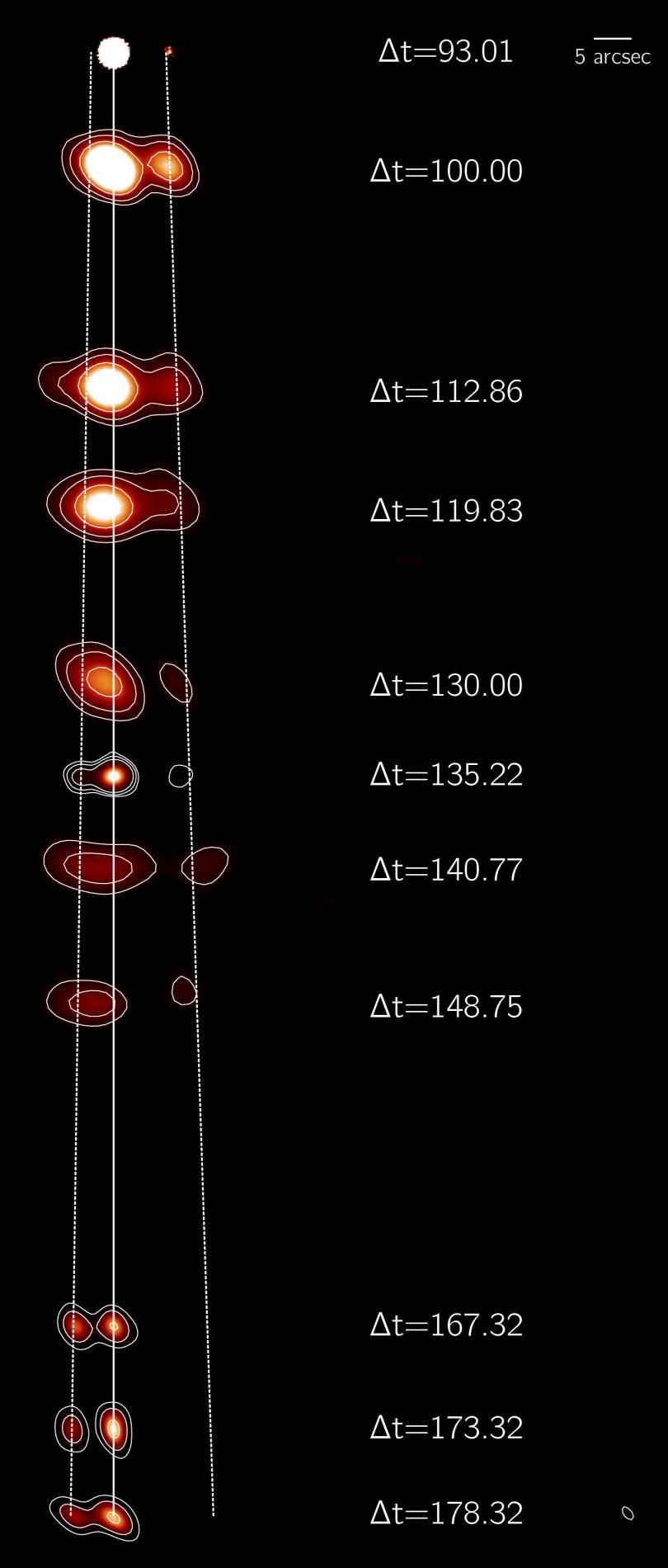Astronomers get the whole film of how a black hole ejects matter and interacts with the medium
The black hole, which forms a binary system with a sun-like star, experienced an ejection of matter that transported gas over huge distances. An extensive observation campaign made it possible to follow the evolution of the ejected material, which shows how the black hole feeds back into the interstellar medium
Stellar black holes are formed after the collapse of a very massive star, and we know that they have a gravitational field so intense that even light cannot escape from them. However, there are mechanisms through which these objects feed back into the interstellar medium, by ejecting, through jets or ejections, some of the material that is trapped in their accretion disk. Now, an international group of astronomers has observed, over a period of six months, the evolution of the material expelled by a black hole. The results are published today in Nature Astronomy.
Known as MAXI J1820+070, or J1820, the black hole is part of a binary system, in which it and a companion sun-like star rotate around a common center of mass. In these systems it is common for the black hole to absorb material from its companion star, which falls towards the black hole through a surrounding disk: as it falls, the material heats up and the disk emits X-rays. These are highly variable objects, whose brightness depends on how much gas the black hole can absorb. Sometimes a bipolar jet, that expels part of the material and is visible in radio waves, is also developed, as in J1820.
"Generally, this type of astrophysical system accretes a very small amount of material and so it cannot be seen. They do however occasionally go into outburst and only then are they observable: we were lucky enough to detect the eruption at J1820 shortly after it occurred in the summer of 2018," says Joe Bright, a researcher in the Department of Physics at Oxford University who is leading the study.
"A rapid coordination to make high-resolution radio observations a few days after the start of the event was essential to interpret the morphological changes of the source in the following six months", says Javier Moldón, a researcher at the Institute of Astrophysics of Andalusia (IAA-CSIC) who is participating in the work.

Thus, an extensive observation campaign was deployed that included telescopes in the United Kingdom, such as e-MERLIN, and the United States, as well as the MeerKAT telescope, recently operational in South Africa. "With these facilities we were able to track the connection between accretion and outflows. More excitingly we were able to observe the system launching ejections of material, and to track these ejections over a wide range of separations from the black hole", says Bright (U. Oxford).
The recorded velocities are among the highest ever observed for an object outside the Solar System, so much so that the material appeared to move faster than light - although it does not, it is an optical phenomenon known as apparent superluminal motion. There were also several ups and downs in the brightness of the system: there were initial rapid declines due to the evolution of the ejected material, and then a further increase followed by a slower decay due to the constant interaction of the material with the interstellar medium.
Stellar black holes, like J1820, are considered miniature versions of the supermassive black holes found in the cores of galaxies. The feedback from these black holes is thought to be a vital component that regulates the growth of galaxies, but these systems evolve over very long time scales. Their stellar counterparts, however, evolve rapidly and are therefore the perfect systems for studying the feedback process and its connection to accretion.
J. S. Bright et al. “An extremely powerful long lived superluminal ejection from the black hole MAXI J1820+070”, Nature Astronomy (March 2020) https://www.nature.com/articles/s41550-020-1023-5
Instituto de Astrofísica de Andalucía (IAA-CSIC)
Unidad de Divulgación y Comunicación
Silbia López de Lacalle - sll[arroba]iaa.es - 958230676
https://www.iaa.csic.es
https://divulgacion.iaa.csic.es
